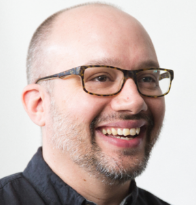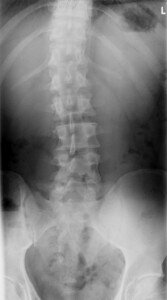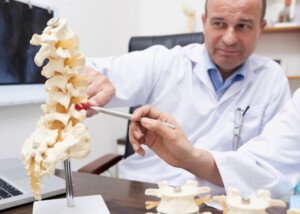Do you really need surgery to correct lumbar scoliosis? Could there be a conservative way to deal with this problem?
“Research is inconclusive on whether nonsurgical care truly corrects [lumbar] scoliosis by reducing the curvature of the spine,” begins Dr. Jeff Langmaid, DC, Founder/owner of The Evidence Based Chiropractor, LLC, in Tampa, FLA, a research-based marketing and practice growth company that serves thousands of chiropractors across the world.
“However, many patients have received significant symptomatic relief from scoliosis through nonsurgical and conservative measures,” continues Dr. Langmaid.
“The primary conservative care options are physical therapy and/or chiropractic care.”
When might surgery be necessary for scoliosis including lumbar?
“The conversation for surgical intervention typically starts when the patient’s spine has a curvature of 45 to 50 degrees,” explains Dr. Langmaid.
“A vast majority of patients fall under the 45-degree threshold and can benefit from conservative care.
“Nonsurgical, conservative care may not always straighten the spine, but it often provides significant relief and functional improvement for patients with scoliosis.”
Keep in mind that a person may have scoliosis but also be asymptomatic—and thus not needing any treatment.
“Because of this, surgeons will typically wait until conservative care is exhausted before surgical intervention is discussed.”
Treatment and Management of Scoliosis Including Lumbar without Surgery
Dr. Langmaid explains, “Physical therapists will primarily work with a patient for strengthening and stretching muscles that support the spine.
“Strengthening and stretching the muscles around the spine may help reduce pain and prevent functional loss associated with scoliosis.
“Physical therapists may also use passive modalities, such as electric stimulation, heat or ice to reduce pain and inflammation around the unwanted curve.”
Chiropractic Medicine
“Chiropractors typically focus on the segmental motion of each vertebra,” says Dr. Langmaid.
“Patients often receive relief from the challenges of scoliosis with improved range of motion. Chiropractors may also choose to use passive modalities and/or strengthening or stretching to support their care.”
Causes of Scoliosis
The most common form of scoliosis has no known cause, but it does tend to run in families.
Less common forms may be caused by a neuromuscular condition such as cerebral palsy (which can be present at birth or acquired due to head trauma later in childhood).
An injury or infection to the spine is another possible cause of scoliosis.
 Jeff Langmaid, DC
Jeff Langmaid, DC
 Lorra Garrick has been covering medical, fitness and cybersecurity topics for many years, having written thousands of articles for print magazines and websites, including as a ghostwriter. She’s also a former ACE-certified personal trainer.
Lorra Garrick has been covering medical, fitness and cybersecurity topics for many years, having written thousands of articles for print magazines and websites, including as a ghostwriter. She’s also a former ACE-certified personal trainer.
.



























